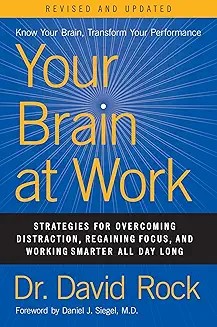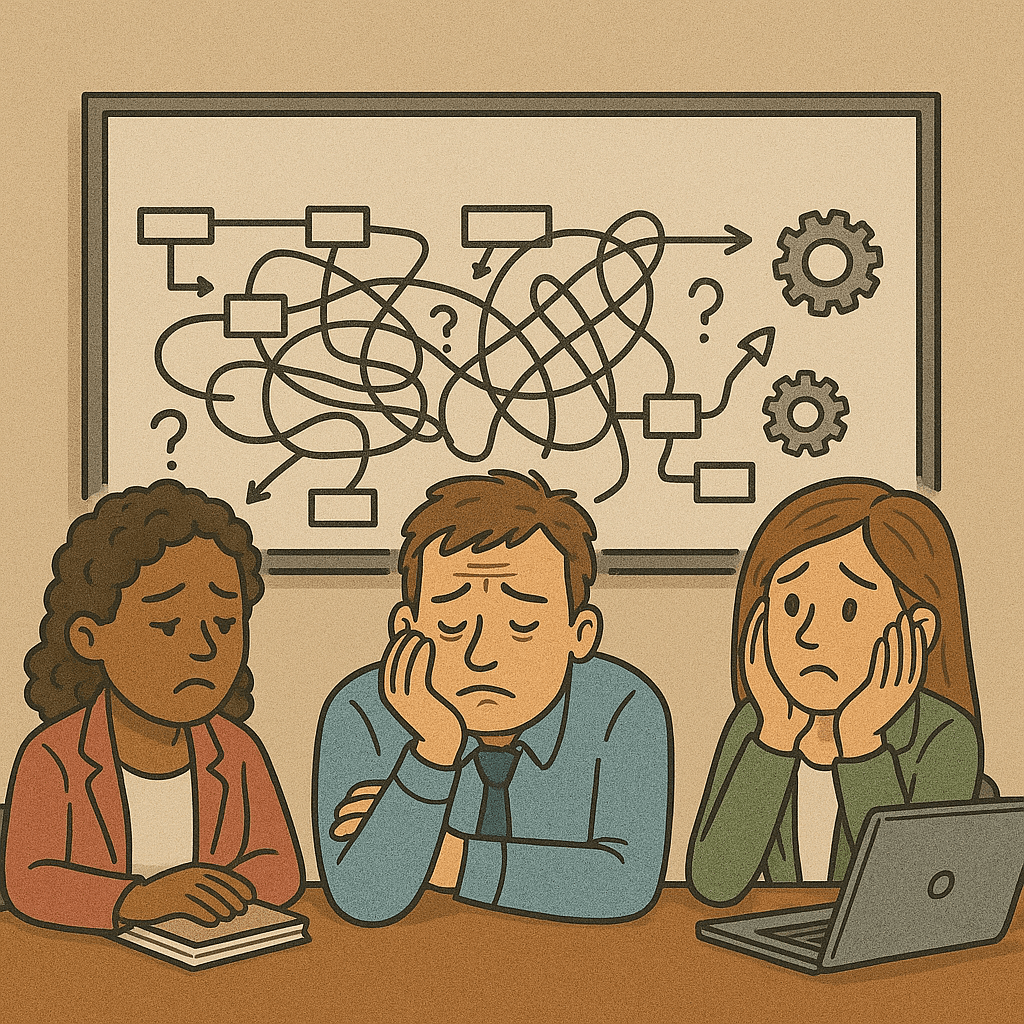
“How come I get so frequently distracted at work?”
“How can I wade through stressful meetings and keep myself from losing my poise and temper?”
“Why is productive collaboration with my co-workers so hard? Is it me or is it them?”
“How can I improve my relationships at home to be more healthy and mutually supportive?”
If you are grappling with questions like the above and more, “Your Brain at Work” by Dr. David Rock is the book for you. Dr. Rock’s promise is that if you understand your brain better and more importantly, observe how it works in real-time, you would get much better at addressing questions like the above.
Overall, it is an EXCELLENT book in many ways and I am sharing some thoughts on the underlying reasons.
Here is some background about the author. Dr. Rock is a well-established researcher and consultant and originator of the term “NeuroLeadership. He is the co-founder and CEO of the NeuroLeadership Institute (NLI) a leading human capital consulting organization bringing neuroscientists and leadership experts together. NLI is helping 40 of the top 100 firms in the world to make their organizations better places for people through neuroscience. The book is based on Dr. Rock’s research & consulting experience over several years.
While reading about brain regions and their function, information about the prefrontal cortex (PFC) was a revelation to me. Apparently, it is the last major brain region to develop in human evolution. Accounting for just 4-5% of the brain volume, it is the vital biological seat of all our interactions with the external world. It is central to thinking things through. Without it, we would be incapable of planning anything, even the most mundane of daily life, grocery shopping! However, mighty as the PFC may be, it does have some weaknesses or vulnerabilities. It works best with just the right amount of arousal; too much and it can get overwhelmed pretty easily.
In describing the PFC, the author uses a nice metaphor – that the PFC is like a very small stage that can accommodate only a small number of “actors” at a given time; actors are thoughts, memories and imaginations as well as pieces of information from the external world. For the PFC to perform well (so that the brain is not distracted), the number of actors in the small stage has to be kept to 3 or 4 at time. Also, the stage is quite energy hungry because it needs “stage lights” for illumination and they need plenty of “charge” – nutrients such as glucose and oxygen. That’s why we are unable to focus and plan well when we are tired and hungry; or emotions overwhelm us and drain energy from the PFC.
The author revels in such simplicity throughout the book – as in the above case using a stage metaphor.
Here is another thing about the author’s simplicity of presentation. The brain and its workings are not easy subjects for an engaging popular book. The author has addressed this challenge by taking a series of day-to-day situations of a young couple Emily and Paul with a couple of small children. Each chapter is organized like scenes in a play describing a situation in their daily lives and how they reacted to these situations. With their limited understanding of their brains at work, they fall short of how to address them and end the day tired, frustrated and often angry. Each scene then follows up a “Take Two” – a rehash of the same situation which they could have dealt with better with a better understanding of how their brains functioned and how to better “respond” rather than just “react”. Drawing from that, the author provides a list at the end on “Some Things to Try” for the reader. Here is one such sample list from “Scene 7 Derailed Drama” (paraphrased):
- Learning to invoke a mental “director” to observe your emotional state like a bystander
- Be conscious of things that may increase the limbic system (the amygdala part of the brain) response (impulse-driven) and work on reducing these before full-scale arousal
- Practice noticing strong emotions as they arise and improve on sensing them earlier
- Practice assigning words to emotional states (using techniques like labelling and reframing) to reduce arousal when strong emotions do kick in
With lists such as above in every chapter, the book serves as a practical How-to guide for the reader.
There are so many valuable nuggets in the book in every chapter. I will share just one with you (pp 96) for a flavor:
“By understanding your brain, you increase your capacity to change your brain. The more you notice your experience whether it is the small capacity of the stage (remember PFC?), the dopamine high of novelty or the way you need a moment to gather an insight, the more opportunities you have to become mindful, stop and observe. Instead of becoming more self-aware by meditating on a mountain, you can do so while you work”
In conclusion, I highly recommend the book for just about anyone. There is a sure take-away that it would greatly help your working and personal lives for a happier day every day and to cope with the not-so-happy days through reflection, awareness and improvement.





